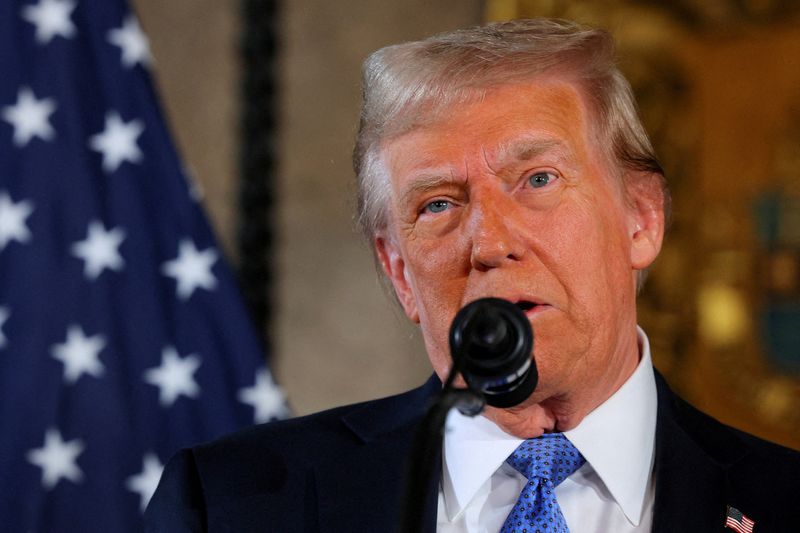
By David Milliken and Suban Abdulla
LONDON (Reuters) -Bank of England policymakers split over whether to cut interest rates on Thursday with more officials than expected seeking to help the slowing economy with lower borrowing costs despite lingering inflation pressure.
The BoE kept its benchmark Bank Rate on hold at 4.75% – as widely expected – but three of the Monetary Policy Committee’s nine members voted to cut them to 4.5%: Deputy Governor Dave Ramsden and external members Swati Dhingra and Alan Taylor.
Economists polled by Reuters had expected only one MPC member to vote for a cut. Sterling fell by a third of a cent against the U.S. dollar after the decision was announced.
Governor Andrew Bailey said the central bank needed to stick to its existing “gradual approach” to cutting rates.
“With the heightened uncertainty in the economy we can’t commit to when or by how much we will cut rates in the coming year,” he said.
Economists polled by Reuters last week forecast the BoE would cut rates four times next year. But financial markets have scaled back their expectations sharply in response to faster-than-expected wage growth and only see up to two cuts.
Interest rate-sensitive British two-year government bond yields fell sharply before partially recovering to stand around 2 basis points lower than before the decision.
Interest rate futures priced in less of a chance of a rate cut in the immediate future – down to a one-in-three possibility at the BoE’s next meeting in February from two-in-five earlier. Expectations for 2025 as a whole were little changed.
“The MPC’s ability to ease interest rates next year will be constrained by the challenging inflation backdrop,” Yael Selfin, chief economist at KPMG UK, said.
“This will put the BoE in a unique position relative to its counterparts in Europe, particularly the ECB, where a weakening growth outlook increases the urgency to cut rates,” she added.
But Suren Thiru, economics director at accountancy body ICAEW, said there were signs the BoE could move more quickly.
“The split vote decision and the dovish tone of the minutes suggest that a February interest rate cut remains very much in play, if not yet a done deal,” he said.
SLOWER RATE CUTS
The BoE has already been less willing to cut rates than either the U.S. Federal Reserve or the European Central Bank, reducing rates by just half a percentage point this year.
Official figures on Wednesday showed British consumer price inflation rose to 2.6% in November – the highest in the Group of Seven rich economies by a small margin, and slightly higher than the BoE itself had forecast last month.
“Headline inflation is expected to continue to rise slightly in the near term,” the BoE said.
However, the central bank also cut its growth forecast for the final quarter of this year to zero from a 0.3% forecast just six weeks ago.
Britain’s economy contracted in September and October – the first back-to-back monthly falls in output since 2020 – according to official data last week and business sentiment has tumbled since finance minister Rachel Reeves announced a 25 billion pound tax hike for employers in her Oct. 30 budget.
MPC members who backed keeping rates on hold said it remained “particularly uncertain” whether these higher costs would be passed on to consumers through higher prices or lead to job losses and slower pay growth.
“Recent developments added to the argument for a gradual approach to the withdrawal of policy restrictiveness, while eschewing any commitment to changing policy at a specific meeting,” they said.
The three MPC members who voted to cut rates said a “very restrictive” policy stance risked pushing inflation too far below its 2% target in the medium term and creating an unduly large amount of spare capacity in the economy.



